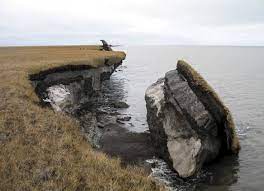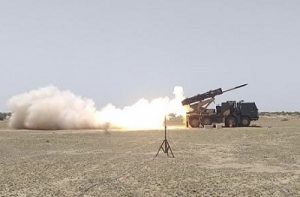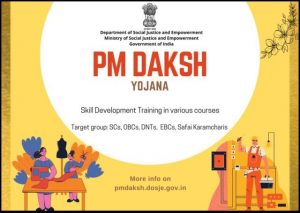Today Current Affairs: 12th April 2022 for UPSC IAS exams, State PSC exams, SSC CGL, State SSC, RRB, Railways, Banking Exam & IBPS, etc
Table of Contents
Coastal Erosion:

The Ministry of Earth Sciences informed the Lok Sabha that of the 6,907.18-km-long coastline of the Indian mainland, about 34% is under varying degrees of erosion, while 26% is of an accretional nature and the remaining 40% is in a stable state.
- The National Centre for Coastal Research (NCCR), Chennai, an attached office of the Ministry of Earth Sciences (MoES), is monitoring shoreline erosion since 1990 using remote sensing data and GIS mapping techniques.
- About 6,907.18 km long Indian coastline of mainland has been analysed from 1990 to 2018.
- In terms of percentage, West Bengal, located on the eastern coast of the country, with a 534.35-km-long coastline, suffered erosion along about 60.5% of the coast (323.07 km) over the period from 1990 to 2018.
- This is followed by Kerala on the west coast, which has 592.96 km of coastline and 46.4% of it (275.33 km) faced erosion.
- Tamil Nadu, with a long coastline of 991.47 km, recorded erosion along 42.7% of it (422.94 km).
- Gujarat, with the longest coastline of 1,945.6 km, recorded erosion along 27.06% (537.5 km) of it.
- In the Union Territory of Puducherry, with a 41.66-km-long coastline, about 56.2% of its coast (23.42 km) recorded erosion.
- Another organisation under the Ministry, the Indian National Centre for Ocean Information Services (INCOIS) has prepared and published an atlas of Coastal Vulnerability Index (CVI) maps for the entire coastline of India at a 1:100000 scale, the Ministry informed Parliament.
Enhanced Pinaka Mk-I Rocket System:

The Enhanced Pinaka Mk-I Rocket System (EPRS) was successfully test fired in the Pokhran range in Rajasthan.
- As part of the same set of trials, the Area Denial Munition (ADM) was also successfully tested.
- The tests also validated the performance of different variants of munitions and fuzes that can be used in the Pinaka rocket system.
- ADMs are a category of ammunition used to prohibit the adversary from occupying or passing through a particular area.
- The EPRS is the upgraded version of the Pinaka variant that has been in service with the Indian Army for the last decade.
- The design and development has been carried out by Pune-based DRDO (Defence Research and Development Organisation) laboratories – Armament Research and Development Establishment (ARDE) and High Energy Materials Research Laboratory (HEMRL).
- The upgrades include advanced technologies enhancing the range to meet the emerging requirements of the battlefield.
- While the Mark-1 has a range of 38 km, the enhanced version of Mark-1 tested in the last fortnight has a range of 45 km with some key additional features.
- The new incarnation of pinaka represents one of the few examples of an evolutionary process being followed with an indigenous Indian weapon system.
- The Pinaka rocket system is a multi-barrel rocket system, which is named after Lord Shiva’s bow.
- It is developed by Pune-based Armament Research and Development Establishment (ARDE) and High Energy Materials Research Laboratory (HEMRL).
- The development of the Pinaka was started by the DRDO in the late 1980s as an alternative to the Multi Barrel Rocket Launcher systems of Russian make called the ‘Grad’, which are still in use by some regiments.
- After successful tests of Pinaka Mark-1 in late 1990, it was first used in the battlefield during the Kargil war of 1999, quite successfully. Subsequently, multiple regiments of the system came up in the 2000s.
- It can fire a salvo of 12 rockets over a period of 44 seconds.
- One battery of the Pinaka system consists of six launch vehicles, accompanied by loader systems, radar and links with network-based systems and a command post. One battery can neutralise an area of 1 km by 1 km.
Reconstitution Of The Mullaperiyar Dam’s Supervisory Committee:

The Supreme Court ordered the reconstitution of the Mullaperiyar dam’s supervisory committee.
- The committee will include one technical expert each from Tamil Nadu and Kerala, the two States involved in the dispute concerning safety of the dam.
- The court has empowered the panel with functions and powers on par with that of the National Dam Safety Authority (NDSA).
- NDSA is a body envisaged under the Dam Safety Act, 2021.
- For any act of failure, “appropriate action” will be taken against the persons concerned not only for having violated the directions of the court but also under the Act
- The act talks of one year imprisonment or fine or both for refusal to comply with directions of bodies formed under the law.
- As per the Supreme Court latest order, the two States are expected to nominate, within two weeks, one representative each to the supervisory committee, in addition to one nominee each.
- The Mullaperiyar, a 126-year-old dam, is located on the confluence of the Mullayar and Periyar rivers in Kerala’s Idukki district.
- The dam stands at the height of 53.66 metres and 365.85 metres in length.
- The dam is owned, operated and maintained by Tamil Nadu.
- Tamil Nadu maintained it for several purposes, including irrigation, drinking water supply and hydro-power generation.
- In late 1979, after the eruption of the controversy over the structural stability of the dam, it was decided at a tripartite meeting chaired by K. C. Thomas, the then Chairman of the Central Water Commission that the water level be lowered to 136 feet against the full reservoir level of 152 feet so that Tamil Nadu could take up strengthening measures.
- In 2006 and 2014 the Supreme Court held that the water level be raised to 142 feet, up to which Tamil Nadu stored water even last year (2021).
- The court’s judgment of 2014 also provided for the formation of the supervisory committee and the completion of the remaining work by Tamil Nadu.
- But, there has been no end to litigation over the dam with Kerala witnessing landslides in recent years.
- Though there had been no reports of landslides in the vicinity of the dam site, the events in other parts of the State led to a renewed campaign against the dam.
- The Kerala government proposed that the existing dam be decommissioned and a fresh one be built
- These options are not completely acceptable to Tamil Nadu which wants to complete the remaining strengthening work and restore the level to 152 feet.
Hindi Compulsory In The Eight Northeastern States:

The Government of India provided that Hindi would be made compulsory up to Class 10 in the eight northeastern states.
- Hindi is described as “the language of India”.
- However, the move has been met with protests from various organisations in the Northeast.
- Also, several south Indian states have criticised the central government decision.
- Instead, these groups are supportive of three-language policy – English, Hindi and the local language.
- The state is protected by the Sixth Schedule of the Constitution and the Centre would not be able to impose Hindi on the students.
- Centre’s move will provide Hindi-speakers the economic, academic and administrative edge and let them control non-Hindi speaking regions of the country in the long run.
- In India most of the states have been formed on linguistic basis.
- Conflicts over identity, especially over languages tend to be escalated due to limited resources in India.
- The status of language has been a critical issue that has caused division of states in the past.
- Such states as Andhra Pradesh (1st state formed on linguistic basis), Punjab and Gujarat were created due to statehood demand on linguistic basis.
Three-Language Formula:
- Three-Language Formula was first proposed by Kothari Commision 1968. Under this scheme:
- First language: It will be the mother tongue or regional language.
- Second language: In Hindi speaking states, it will be other modern Indian languages or English. In non-Hindi speaking states, it will be Hindi or English.
- Third Language: In Hindi speaking states, it will be English or a modern Indian language. In the non-Hindi speaking state, it will be English or a modern Indian language.
Har Gobind Khorana:

The year 2022 marks the 100th birthday of Nobel Prize-winning chemist Har Gobind Khorana.
- Born: January 9, 1922, Raipur, India
- He began research on nucleic acids during a fellowship at the University of Cambridge (1951) under Sir Alexander Todd.
- He made another contribution to genetics in 1970 when he and his research team were able to synthesize the first artificial copy of a yeast gene.
- His later research explored the molecular mechanisms underlying the cell signalling pathways of vision in vertebrates.
- His studies were concerned primarily with the structure and function of rhodopsin, a light-sensitive protein found in the retina of the vertebrate eye.
- He also investigated mutations in rhodopsin that are associated with retinitis pigmentosa, which causes night blindness.
- He shared the 1968 Nobel Prize for Physiology or Medicine with Marshall W. Nirenberg and Robert W. Holley for research that helped to show how the nucleotides in nucleic acids, which carry the genetic code of the cell, control the cell’s synthesis of proteins.
- In addition to the Nobel Prize, Khorana received the Albert Lasker Basic Medical Research Award (1968) and the National Medal of Science (1987).
- The Indian government awarded Khorana the Padma Vibhushan in 1969.
Fortified Rice To Distribute Under Government Programmes:

The Union Cabinet has approved a scheme to distribute fortified rice under government programmes.
- Food Corporation of India and state agencies have already procured 88.65 LMT (lakh tonnes) of fortified rice for supply and distribution.
- In 2019, the government approved a Centrally sponsored pilot scheme for fortification of rice for a period of three years beginning 2019-2020.
- The scheme is being implemented in 15 districts across as many States.
- In 2020, during his Independence Day speech, Prime Minister Narendra Modi announced that by 2024 rice made available under every government programme will be fortified to fight malnutrition.
- The government ramped up distribution of fortified rice last year across anganwadis under the Integrated Child Development Scheme (now rechristened Saksham anganwadi and Poshan 2.0) as well as mid-day meal scheme implemented at schools (renamed as PM Poshan).
- Food fortification is defined as the practice of adding vitamins and minerals to commonly consumed foods during processing to increase their nutritional value.
- The Food Safety and Standards Authority of India (FSSAI) defines fortification as “deliberately increasing the content of essential micronutrients in a food so as to improve the nutritional quality of food and to provide public health benefit with minimal risk to health”.
- According to the Food Ministry, fortification of rice is a cost-effective and complementary strategy to increase vitamin and mineral content in diets.
- According to FSSAI norms, 1 kg fortified rice will contain iron (28 mg-42.5 mg), folic acid (75-125 microgram) and Vitamin B-12 (0.75-1.25 microgram).
- In addition, rice may also be fortified with micronutrients, singly or in combination, with zinc (10 mg-15 mg), Vitamin A (500-750 microgram RE), Vitamin B1 (1 mg-1.5 mg), Vitamin B2 (1.25 mg-1.75 mg), Vitamin B3 (12.5 mg-20 mg) and Vitamin B6 (1.5 mg-2.5 mg) per kg.
- Fortification is a safe method of improving nutrition among people. The addition of micronutrients to food does not pose a health risk to people.
- It does not require any changes in food habits and patterns of people. It is a socio-culturally acceptable way to deliver nutrients to people.
- It does not alter the characteristics of the food—the taste, the feel, the look.
- It can be implemented quickly as well as show results in improvement of health in a relatively short period of time.
- This method is cost-effective especially if advantage is taken of the existing technology and delivery platforms.
Coal Gasification Plant : Jindal Steel & Power Limited

Jindal Steel & Power Limited (JSPL) has plans of setting up a coal gasification plant — the second in the country — at its Raigarh plant in Chhattisgarh.
- India is committed to cut consumption of coal, a primary pollutant, in power plants to half by 2030 and reduce its overall carbon footprint.
- Coal gasification is considered a greener alternative to burning the fossil fuel in furnaces.
- Coal gasification is the process of producing syngas, a mixture consisting of carbon monoxide (CO), hydrogen (H2), carbon dioxide (CO2), natural gas (CH4), and water vapour (H2O).
- During gasification, coal is blown with oxygen and steam while also being heated under high pressure.
- During the reaction, oxygen and water molecules oxidize the coal and produce syngas.
- Transporting gas is a lot cheaper than transporting coal.
- Help address local pollution problems.
- Has greater efficiency than conventional coal-burning because it can effectively use the gases twice: the coal gases are first cleansed of impurities and fired in a turbine to generate electricity.
- The exhaust heat from the gas turbine can be captured and used to generate steam for a steam turbine-generator.
UN Peacekeepers:

Canada and allies are planning to work togather to support among United Nations General Assembly members, including China, for a peacekeeping mission in Ukraine.
- Countries opposing Russia’s invasion should seek a recommendation from the General Assembly for a peacekeeping mission with the goal of keeping humanitarian corridors open.
- While decisions about establishing, maintaining or expanding a peacekeeping operation are taken by the Security Council, the financing of UN Peacekeeping operations is the collective responsibility of all UN Member States.
- Every Member State is legally obligated to pay their respective share towards peacekeeping. This is in accordance with the provisions of Article 17 of the Charter of the United Nations.
- The top 5 providers of assessed contributions to United Nations Peacekeeping operations for 2020-2021 are:
- United States (27.89%).
- China (15.21%).
- Japan (8.56%).
- Germany (6.09%).
- United Kingdom (5.79%).
- United Nations Peacekeeping is a joint effort between the Department of Peace Operations and the Department of Operational Support.
- Every peacekeeping mission is authorized by the Security Council.
- UN peacekeepers (often referred to as Blue Berets or Blue Helmets because of their light blue berets or helmets) can include soldiers, police officers, and civilian personnel.
- Peacekeeping forces are contributed by member states on a voluntary basis.
- Civilian staff of peace operations are international civil servants, recruited and deployed by the UN Secretariat.
PM-DAKSH Yojana: Need And Significance

The youth, owing to their educational backwardness, are finding difficulties to obtain employment with good compensation after undergoing short-term skilling courses.
- In this background, the government has highlighted the need for and significance of this scheme.
- The scheme is being implemented by the Ministry of Social Justice and Empowerment from the year 2020-21.
- Under the scheme, eligible target groups are being provided skill development training programmes on up-skilling/reskilling, short term training programme, long term training programme and entrepreneurship development program (EDP).
- Marginalized persons of SC, OBC, Economically Backward Classes, De-notified tribes, Sanitation workers including waste pickers, manual scavengers, transgenders and other similar categories.
- Most of the persons of target group are having minimal economic assets; therefore, provision of training and enhancing their competencies is essential for economic empowerment/ upliftment of these marginalized target groups.
- Many of the persons of target group belong to the category of rural artisans who have become marginalized owing to coming of better technologies in market.
- There is also a need to empower the women amongst the target group, who, due to their overall domestic compulsions, cannot be involved in wage employment which normally involves long working hours and sometimes migration to other cities.
World Doubles Squash Championships:

Dipika Pallikal won the mixed doubles and women’s doubles championships at the World Doubles Squash Championships teaming up with Saurav Ghosal and Joshna Chinappa respectively.
- Teaming up with Saurav Ghosal, Dipika first clinched the mixed doubles title with an 11-6, 11-8 win over Alison Waters and Adrian Waller of England.
- An hour and a half after winning the mixed doubles, she teamed up with Joshna Chinappa to win the women’s doubles final with an 11-9, 4-11, 11-8 win over Sarah Jane Perry and Alison Waters who were representing England.
- India had never won gold in the World Doubles Squash Championships and this is the first time the country has won the gold medal in this tournament.
- The men’s doubles were won by Declan James and James Willstrop of England.
- In Glasgow, Scotland, this year’s event was held.
- In the mixed doubles, Joshna Chinappa and Vikram Malhotra finished tenth after losing 11-4, 11-6 to Aifa Azman and Mohammad Syafiq Kamal of Malaysia. The only men’s doubles entries from India were Vikram Malhotra and Ramit Tandon.
Gujarat ‘Madhavpur Mela’:

President Ramnath Kovind inaugurated the annual Madhavpur Mela. It is a five-day cultural fair that is held in Madhavpur, the coastal village, located 60 kilometers south of Porbandar.
- This festival celebrates the marriage of Lord Krishna with Rukmini.
- This marriage is said to have taken place in Madhavpur.
- It is said that Rukmini was from the present-day Arunachal Pradesh.
- On Ram Navami, Madhavpur Mela begins.
- Ram Navami is the day that marks the birth of Lord Rama.
- A Madhavrai temple of the 15th-century marks the site of this fair.
- Every year during this event a cultural fair is also held.
- A chariot is decorated colourfully and it carries the idol of Lord Krishna around the village.
- The festivities are usually held for a period of five days.
Mahatma Jyotirao Phule Birth Anniversary:

Jyotirao Phule was born on Born on 11th April 1827. He was an anti-caste reformer and social activist who along with Savitribai Phule, his wife, worked for the upliftment of children and women of the marginalized communities, and encouraged women’s education.
- He belonged to Maharashtra and worked hard to eradicate caste oppression and untouchability.
- Jyotirao Phule started his first girl’s school at Bhide Wada, Pune in 1848.
- The Satyashodhak Samaj (Society of Truth Seekers) was also formed by him along with his followers with the aim of fighting for basic rights for all those who belonged to the lower castes.
- In his association there were people from various castes and religions.
- After getting recognition for his work he was acclaimed throughout the state of Maharashtra.
- The title of ‘Mahatma’ (‘great soul’) was given to him in 1888 by another social activist Vithalrao Krishnaji Vandekar.
- In the social reform movement in Maharashtra, he is considered to be an important figure.
- At the young age of 13, he was married off.
- In 1848 he was rebuked for attending the wedding of a Brahmin friend as he was from a lower caste.
- Soon he realized that women are not treated properly in society and challenged this by first educating his wife Savitribai.
- Then, in Pune, he started a school for girls. The upper-caste society who were very conservative did not approve of the education of girls and the Phule couple were routinely attacked for their stance on female empowerment and education.
- Their friend Usman Sheikh along with his sister Fatima Sheikh who were also pioneers of female empowerment provided shelter to them and helped them to start a school on their premises.




